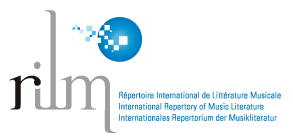The concept of texture in American Music Theory.
Keywords:
textura musical, teoría de la música, Estados Unidos, institucionalización, modelos de análisisAbstract
An important chapter in the development of the concept of texture in the musical thought of the 20th century relates to the characterizations this concept received in the field of American Music Theory. This article reviews some of the theories of texture produced in this field from the '40s onwards. Decades after its first documented usage in musical sense, the publication of an entrance dedicated to the concept of texture in a music dictionary edited by Willi Apel in 1944 represents an institutionalization of the term in the English-speaking musicology. With the constitution in the United States of Music theory as an autonomous field of musical thought, texture will be formalized in an analogous manner as other aspect of' music. Theories of texture, in spite of representing a critical point of view in relation to dominant analytical models. still involve a minor intervention in the field of American musicology.
Downloads
Published
Issue
Section
License
ATTRIBUTION-NONCOMMERCIAL 4.0 INTERNATIONAL
https://creativecommons.org/licenses/by-nc/4.0/
You are free to:
- Share — copy and redistribute the material in any medium or format
- Adapt — remix, transform, and build upon the material
- The licensor cannot revoke these freedoms as long as you follow the license terms.
Under the following terms:
- Attribution — You must give appropriate credit , provide a link to the license, and indicate if changes were made . You may do so in any reasonable manner, but not in any way that suggests the licensor endorses you or your use.
- NonCommercial — You may not use the material for commercial purposes .
- No additional restrictions — You may not apply legal terms or technological measures that legally restrict others from doing anything the license permits.
Notices:
You do not have to comply with the license for elements of the material in the public domain or where your use is permitted by an applicable exception or limitation .
No warranties are given. The license may not give you all of the permissions necessary for your intended use. For example, other rights such as publicity, privacy, or moral rightsmay limit how you use the material.







